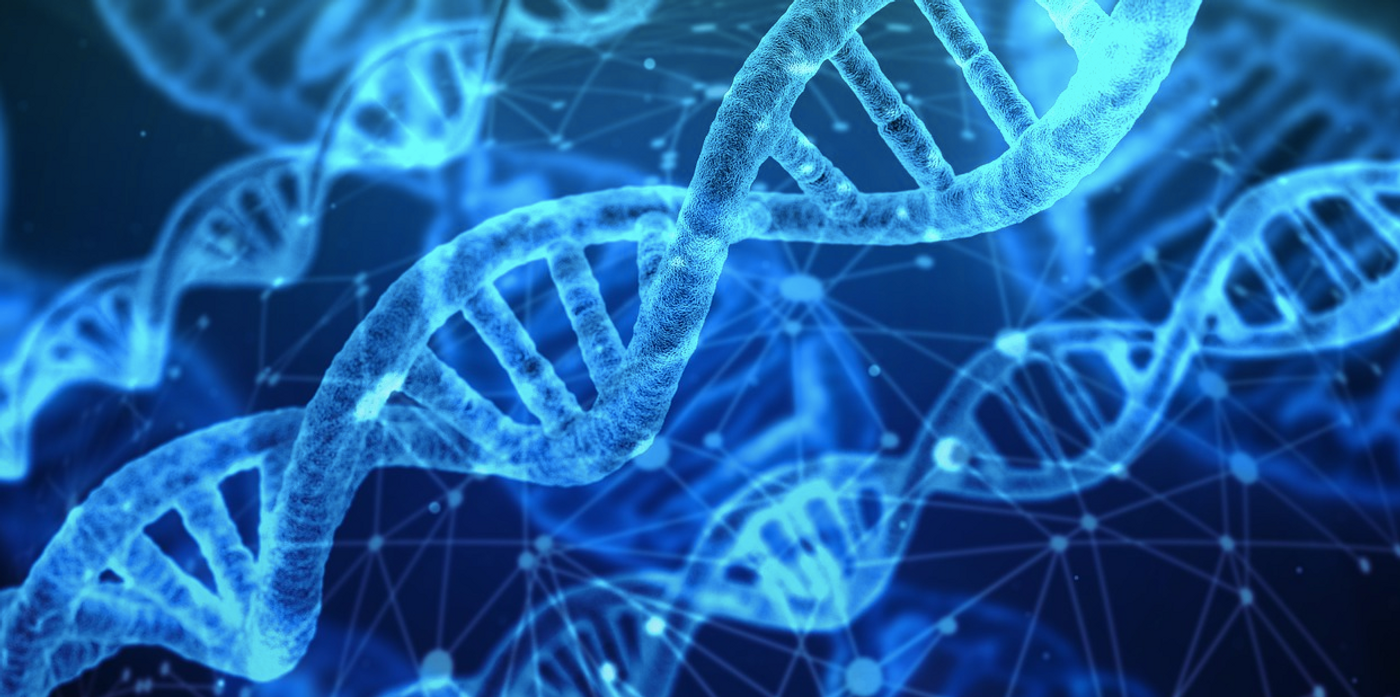DNA was characterized in 1953 by James Watson, Francis Crick, Maurice Wilkins, and Rosalind Franklin at King’s College London. The nature of the genetic code, which uses codons, strings of three nucleotide bases, to encode for an amino acid and generate protein was discovered by Marshall Nirenberg, Har Khorana, and Severo Ochoa at the National Institutes of Health (NIH).
There is variation and redundancy in the genetic code, so it is possible for benign genetic changes to occur. But changes in the sequence can also cause serious disease, usually when those changes, or mutations, result in alterations in a protein that a gene encodes for. Nonfunctional or dysfunctional proteins can have huge consequences. Scientists have traced many different diseases back to specific errors in the genetic code. If those errors could be fixed, or functional copies of a mutated gene could be delivered to cells, it may be possible to cure such diseases. This is the basic idea behind gene therapy.
Martin Cline of the University of California, Los Angeles was the first person to transfer a functional gene into mice to create a transgenic organism. Cline was also the first person to test genetic engineering on humans, against NIH guidelines. In his approach, the beta-globin gene was transferred into the cells of two patients with beta-thalassamia. The experiment failed in part because the treated cells did not replicate. This incident led the NIH to warn other researchers to not attempt similar experiments. Cline lost grants and resigned a department chairmanship at UCLA.
Scientists realized that if gene therapy was going to work, something had to deliver gene therapy reagents into the nucleus of cells, where the genome is. Viral vectors were created for this purpose.
The first time a gene was successfully transferred into the nucleus of human cells was in May 1989. Clinicians inserted a neomycin-resistance gene to mark therapeutic cells that were then infused into a small group of patients. These cells remained in circulation for about two months and caused no adverse reactions.
In 1990, two patients with forms of severe combined immunodeficiency disorder (sometimes known as bubble-boy disease) were selected to be part of a trial. Four-year-old Ashanti DeSilva was first treated on September 14, 1990, and another patient was treated about nine months later.
In this approach, T cells were removed from the patient, and treated with genetic engineering to correct the mutation in the DNA of those T cells. The cells were then reinserted into the patient. For about two years, DeSilva received 11 infusions of the treatment. The second patient got 12 infusions over 18 months. Unfortunately, the engineered T cells would never replicate. But while the patients were not cured, T cells counts improved, and both survived to adulthood. Researchers learned more about how to create a successful technique. DeSilva is now a genetic counselor.
New viral vectors were created and tested in another gene therapy trial in 2000. This time, there would be tragedy when four of the nine patients developed leukemia. Scientists quickly learned that any viral vectors that would be used in humans had to be carefully and thoroughly tested first.
China approved Gendicine, its first gene therapy in 2003, for certain forms of skin cancer. A protein that can fight tumors is carried by a viral vector to tumor cells. There, the gene therapy is meant to stimulate the activity of genes that suppress tumors and influence the immune response.
In 2009, scientists led by Jean Bennett of the University of Pennsylvania treated patients with a genetic eye disorder using an AAV. This trial would lead, eight years later, to the first FDA-approved gene therapy. The first in vivo gene addition therapy, Luxturna, was approved by the FDA in 2017, to treat patients with a form of inherited blindness called biallelic RPE65 mutation-associated retinal dystrophy. The normal version of RPE65 is delivered to cells in this treatment, so they can express a protein that is required for the conversion of light to electrical signals, enabling vision.
On August 30, 2017, the FDA approved Kymriah (tisagenlecleucel) as a treatment for some young patients with a type of acute lymphoblastic leukemia (ALL). In this case, a new gene is introduced into T cells so they will be better at targeting cancer.
Scientists have continued to work to develop even more methods, including CRISPR, to open up more treatment options and experimental gene therapies for patients.
Sources: Nature, US Food and Drug Adminstration (FDA), Bluebird Bio









